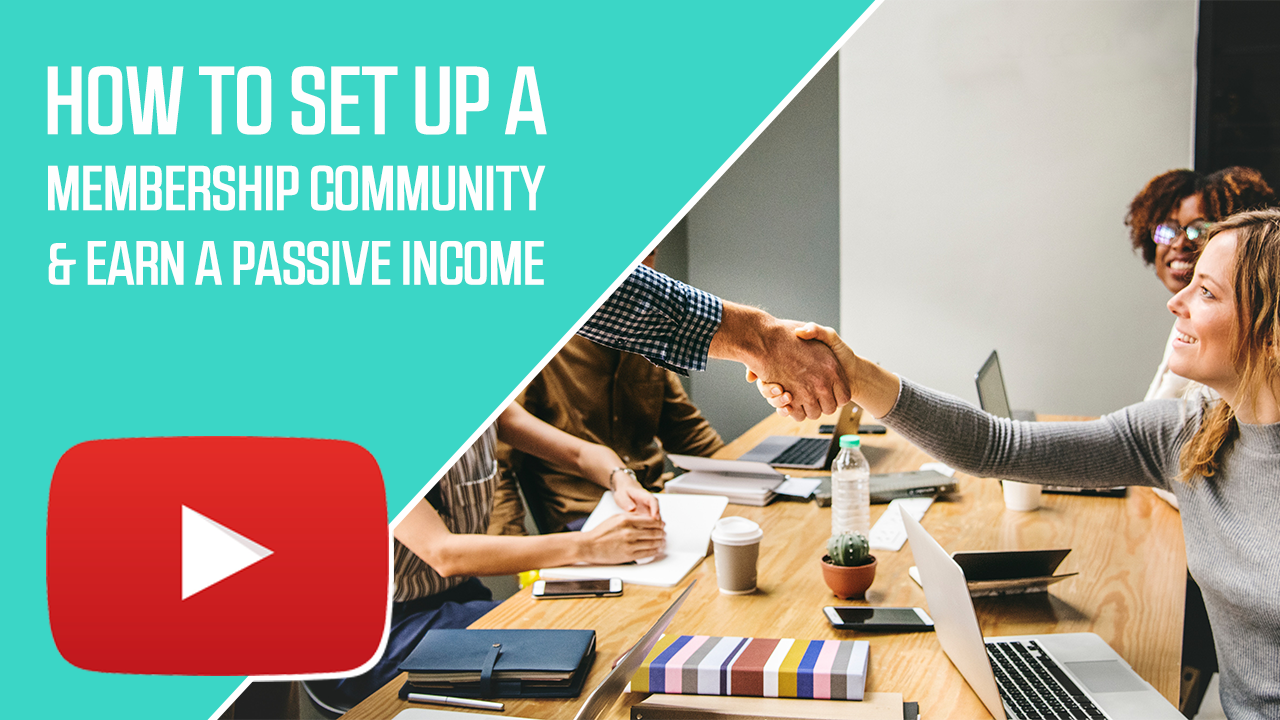We’re talking all about membership communities, how do you start, grow and automate it?
I’m going to tell you exactly how I started a membership community that’s now grossing over $100k a year. It only takes a of couple hours a month for me to manage, I never thought I’d be able to do this!
Pre-Launch
Before you launch you want to do the following:
Email your email list
I sent an email to my email list and said ‘If you are just starting a private practice I would love to jump on a 15-minute phone call to hear about your problems and ask you some questions. We’re trying to develop something new and innovative and we want to make sure we don’t miss the mark. Will you schedule a Skype call with me?’
They then clicked on a link which went into Calendly so I didn’t have to go back and forth trying to find times. I had set specific times that I was going to talk with people.
Scheduled Skype calls with ideal clients
I did around 20 different phone calls with people and I asked them three simple questions:
- ‘When you started your private practice what was that experience like, what was tough, what was easy and what was helpful?’
- ‘What were the biggest pains, what do you wish would have been out there that wasn’t out there to support you during that time?’
- ‘If there was that solution that would answer all of those pains, how much would you pay per month?’
Take notes and look for themes
When you’re talking to this ideal client you want to really get in their head, take notes and look for themes. So for example the three themes that popped up during my interviews were that people wanted:
- Quick way to learn – how to blog effectively, how to get into a rhythm of blogging and how to make it so they could rank higher in Google.
- Community – to have some sense of community, connections with other people and being able to go beyond just some basic eCourse.
- Tools of the trade – those things that will help them grow faster like a logo that looks awesome.
When we launched we started with some education: webinars, live Q&A’s, hot seats and some courses that were within an e-platform. In our community we have small groups, accountability partners and a private Facebook group. And then every month we give away tools of the trade that would help them grow and scale faster. So we heard what they said and they gave us a range of prices of what they would pay for.
Pre-launch invite list
Email your list, reach out to people and say, ‘I’m launching this membership community but I want to make sure that we really make the mark before we launch it big. If you want to be in the test/beta/trial group click here to sign up for the emails to get first access.’
- Trial group at discounted rate – within that list make sure that people know this is going to be the trial group, they’re getting a discounted rate in exchange for feedback. We want to know what works and what doesn’t work.
- Test whether or not there is a market – it’s a great way to test out whether there’s a market for what you want to launch. Say ‘Here’s what we’re going to create this coming January, we are going to launch our first cohort of this membership community. If you want first access jump on the email list.’ If you get two people to sign up, that gives you some pretty good important information. It’s not a failure it’s just information. It tells you there’s probably not a big enough audience the way you framed it, maybe you need to work on giving more free content to build that audience. Get on podcasts, write guest blogs, get going in this area so that you actually have an audience to launch this. On the other side you may have a hundred or 200 people that sign up for this, that’s going to give you great information too.
Launch
When you’re launching to the beta test group, you’re going to do a few things differently than you will when you do your full launch:
Save the date
Email them and send them a save the date for the date you’re launching, indicate the time and mention how many spots are available.
Series of emails leading up to the event
We always do our launches on a Monday morning at 10 a.m. Eastern Standard Time. So we launched it in early January we did it at 10 a.m. and we had a series of emails that went out ahead of time. People need to hear about things more often than not, they put their email at the bottom of their email box so let them know what’s coming up. Share important information such as the fact that they need to be logged into PayPal, if they want the discounted rate they have to take action on Monday at 10:00 a.m. Eastern Standard Time, for example.
Send email 10-15 minutes after launch
Make sure you send an email 10 or 15 minutes after you start (you could say ‘We’ve already had 15 people sign up in the first 15 minutes.’)
Set closing time
You can set a closing date of 48 hours or 4 days. I typically see the biggest sales right at the beginning, then it goes down and then right at the end. You want to make sure you’re doing those follow-up emails and closing that cart.
Beta Test Group
Rates
Once you get this beta test group, if you get 30 people, they will sign up for your member newsletter at a cheaper rate. We started at $55 a month and our regular members are $77 a month. If someone comes in when it’s not a cohort it’s $100 a month, so there’s an incentive to join a cohort when we launch.
Onboarding calls
We did onboarding calls with every single person, I had my virtual assistant set up 15-minute calls to find out their biggest pains, what they wanted to get out of it and to really help them feel like they were connected.
Small groups, accountability partners and Facebook
My virtual assistant then paired them into groups, assigned accountability partners and we got them going in the Facebook group.
Webinars
Then we launched a bunch of webinars, this was a complete disaster. We went through three platforms in three weeks, people couldn’t log in they were frustrated and they they were mad. But then finally we landed on Zoom. This was great fit, it was easy and we haven’t had any major problems with it since we started.
Feedback
The Beta group knew for that $55 a month that they were going to give us feedback, and they did. It was tough to hear sometimes, to feel like we had failed. I had to go back and rerecord webinars, just using QuickTime on my computer, but that’s what it took in the early phases.
But once we landed on Teachable as our e-learning platform, Zoom as the way that we did our webinars and using PayPal to integrate with our email list on AWeber, that all flowed. We were then ready for a full-on launch.
Full On Launch
Sales/Leadpage
When you’re ready to do your full-on launch that’s when you want to set up a sales page. We might call it a lead page that outlines what it is that people are purchasing.
When people click here we have a video that walks them through what Next Level practice is like, it talks about how we have a community of people (Facebook group, small group and the accountability). It also delves into education (webinars, self-paced courses, Q&A’s and hot seats). Then we have tools of the trade where free things like logos, paperwork packets or blog post images are available that will help you grow your practice faster. We outline all of this on the page then we have a link to opt-in for the next cohort, so that’s going on to that original invite list.
Data from the first launch
We knew that about four times the people will sign up for the list that will actually buy. That means if we want to fill up 50 spots we need to have at least 200 people on that list, but each time those are people that didn’t buy so we needed to keep getting people onto that interest list. The data shows that we’ve got to have three or 400 people on this interest list to make the next cohort really launch well.
New cohort
Then again we come up to that new cohort, it’s about to launch, there’s the email series. Now that I’ve done it a few times I hand that off to my virtual assistants, so with each cohort they set that up make sure the flow is going and I just do the bare minimum while tracking every single step of the way.
After Launch
Now after you launch a membership community doesn’t end there, that’s just the sales and marketing side.
Offer quality information
We need to offer quality information, and that’s where you want to have a unique way that you’re offering this. What are you offering this different? For us it was creating a whole ecosystem, it wasn’t just an eCourse or some webinars.
Unique ecosystem
We had these three unique components, we’re bringing together the things that those interviews told us that people wanted.
Things To Look At
You want to go through that process with care in everything that you do:
- Create it
- Automate it
- Review it
- Enhance it
- Surprise people – send them things that just blow them away that are unexpected, one month we sent everybody branded trucker hats and sunglasses just as a way to say thanks.
The more that you can enhance your services and automate it, the more you can build that passive income. Click here to get your free passive income resource. This PDF is just for you on how to grow passive income within your service based industry.
Joseph R. Sanok, MA, LLP, LPC, NCC
 Joe Sanok is an ambitious results expert. He is a private practice business consultant and counselor that helps small businesses and counselors in private practice to increase revenue and have more fun! He helps owners with website design, vision, growth, and using their time to create income through being a private practice consultant. Joe was frustrated with his lack of business and marketing skills when he left graduate school. He loved helping people through counseling, but felt that often people couldn’t find him. Over the past few years he has grown his skills, income, and ability to lead others, while still maintaining an active private practice in Traverse City, MI. To link to Joe’s Google+ .
Joe Sanok is an ambitious results expert. He is a private practice business consultant and counselor that helps small businesses and counselors in private practice to increase revenue and have more fun! He helps owners with website design, vision, growth, and using their time to create income through being a private practice consultant. Joe was frustrated with his lack of business and marketing skills when he left graduate school. He loved helping people through counseling, but felt that often people couldn’t find him. Over the past few years he has grown his skills, income, and ability to lead others, while still maintaining an active private practice in Traverse City, MI. To link to Joe’s Google+ .

